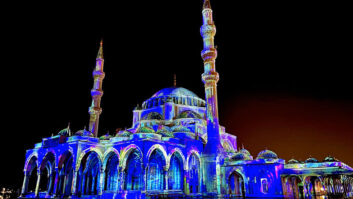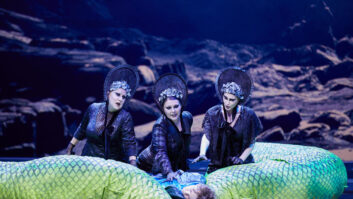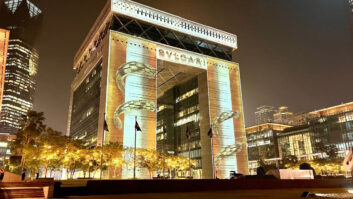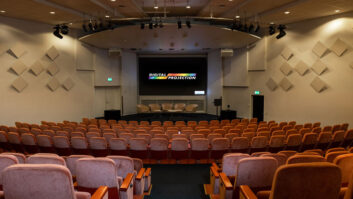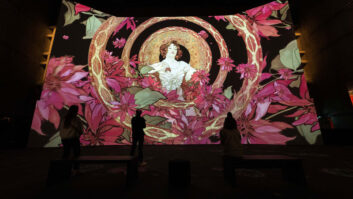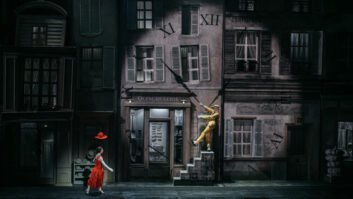The Curtin University HIVE, a world-leading visualisation hub established in 2013 in Perth, Western Australia, which has supported pioneering research in space exploration, health sciences, education and engineering, recently celebrated another milestone: the world’s first installation of Digital Projection’s new Satellite Modular Laser System (MLS) projectors as part of an upgrade project.
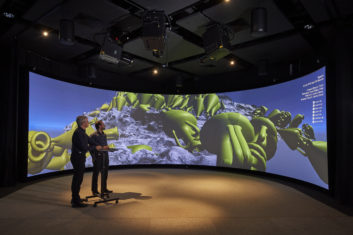 InDesign Technologies, consultants on the project, decided that Digital Projection’s Satellite MLS was the only projection system that met the HIVE’s requirements (full 4K with 120Hz compatibility, and not subject to the exclusion zones that would be necessary with a class-3 laser product) – to the extent that Curtin University was willing to wait for it to come to market rather than compromise by specifying a different system.
InDesign Technologies, consultants on the project, decided that Digital Projection’s Satellite MLS was the only projection system that met the HIVE’s requirements (full 4K with 120Hz compatibility, and not subject to the exclusion zones that would be necessary with a class-3 laser product) – to the extent that Curtin University was willing to wait for it to come to market rather than compromise by specifying a different system.
The upgrade project focused on the Dome and the Cylinder display facilities at the HIVE. Three Satellite MLS systems were installed as part of the Cylinder display, a wrap-around 3D display providing a VR experience for up to 50 users, with a further system deployed in the Dome display, a 4m-diameter half-dome which fills a user’s primary and peripheral field of view.
Taking advantage of the Satellite MLS’s modular nature, which allows up to 100m separation between the projection head and light source, InDesign was able to hang the unobtrusive satellite projector heads at the display sites while locating the light sources around 15m away in a server room containing the other AV and computer equipment.
“The HIVE Cylinder display is the flagship system in the facility,” explained Andrew Woods, manager of the Curtin HIVE. “The Cylinder display uses three projectors to light a 3m-high, 8m-diameter, 180° cylindrical projection screen. In upgrading the HIVE Cylinder display, in particular, we were keen to increase the display resolution to use native 4K projectors, which would provide a four-fold increase in displayed pixels, and to increase the brightness, all while maintaining the existing 120Hz stereoscopic 3D capability of the display.
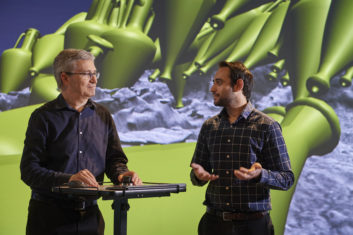 “The Digital Projection Satellite technology allowed us to meet our needs and more, with a small head size, minimised audible noise from the head – because the light source is in the server room – rich laser-light engine visuals, and cinema-quality three-chip DLP images, at a reasonable budget point.
“The Digital Projection Satellite technology allowed us to meet our needs and more, with a small head size, minimised audible noise from the head – because the light source is in the server room – rich laser-light engine visuals, and cinema-quality three-chip DLP images, at a reasonable budget point.
“The Cylinder and Dome displays also have much more punch than they previously did, creating high-quality experiences for the HIVE’s users and visitors overall. We are very impressed with the result and already wowing people with the quality of the visuals and the university’s leading-edge research.”
The improved AV system is an important step forward for a facility whose work revolves around high-impact visuals. “Ultimately our aim is that the displays in the HIVE are essentially invisible to the user, just providing a window into a different world,” added Woods. “Our aim is to put amazing visuals on the blank canvas of these displays – visuals that support the applications and research projects that our users come to us with.”
The HIVE (Hub for Immersive Visualisation and eResearch) at Curtin University in Perth, Western Australia, is one of the most advanced visualisation facilities of its kind, and the only one in the world boasting five different large-scale visualisation displays. Its work with technologies such as virtual reality, augmented reality, data and scientific visualisation, photogrammetric 3D reconstruction, and volumetric imaging has been used to help patients with spinal cord injuries, investigate consumer behaviour and create virtual experiences of shipwreck sites.
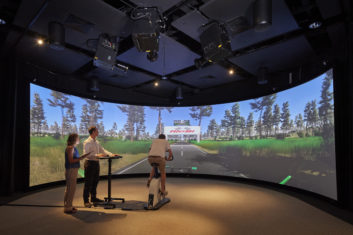 Launched last summer, the unique Satellite MLS separates the light source from the small, lightweight projector ‘head’, giving integrators greater freedom, particularly where space and access are restricted, while reducing noise and heat from the audience location. This technology makes high-end RGB laser illumination accessible at a cost-effective price point.
Launched last summer, the unique Satellite MLS separates the light source from the small, lightweight projector ‘head’, giving integrators greater freedom, particularly where space and access are restricted, while reducing noise and heat from the audience location. This technology makes high-end RGB laser illumination accessible at a cost-effective price point.
